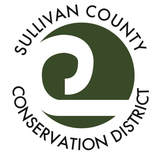Chesapeake Bay Facts & Info
- Chesapeake Bay Watershed is 64,000 square miles
- The Bay itself is about 200 miles long, stretching from Havre de Grace, Maryland, to Virginia Beach, Virginia.
- The Chesapeake Bay was formed about 10,000 years ago when glaciers melted and flooded the Susquehanna River valley.
- Major rivers emptying into the Bay include the James, York, Rappahannock, Potomac, Patuxent, Patapsco and Susquehanna from the west and the Pocomoke, Wicomico, Nanticoke, Choptank and Chester from the east.
- The deepest part of the Bay, located southeast of Annapolis near Bloody Point, is called “The Hole” and is 174 feet deep.
- The Chesapeake Bay holds more than 18 trillion gallons of water.
- The Bay produces about 500 million pounds of seafood per year.
- The Bay supports more than 3,600 species of plants and animals, including 348 species of finfish, 173 species of shellfish, over 2,700 plant species and more than 16 species of underwater grasses.
Program Overview
The Chesapeake Bay Program is a technical and financial assistance program available to farmers owning land within Pennsylvania’s Susquehanna or Potomac River Basin’s prior to 1984. Under the Chesapeake Bay Program eligible landowners may receive free technical assistance towards the planning, design and installation of structural BMPs. In many cases, the conservation district can secure funding for various projects or practices needed to achieve compliance to agricultural regulations. The district also works closely with the USDA Natural Resources Conservation Service to obtain funding and additional technical support through various federal programs.
Eligible Practices
Some of the eligible practices include, animal waste management, barnyard runoff control, roof runoff management, composting, permanent vegetative cover, diversions, grazing land protection, critical area protection, waterways, cropland protection, conservation tillage, no till, cover crops, stream protection, sediment and erosion control, soil and manure analysis.
Financial Assistance
Several other financial assistance programs are available to provide funding in the form of grants or low interest loans to offset the cost of nutrient management plan development and/or implementation of Best Management Practices (BMPs) in an approved Act 38 nutrient management plan.
Interested in Learning More?
Quinn Hartung
Chesapeake Bay Technician
Sullivan County Conservation District
Phone: 570-928-5057
Email: [email protected]
Chesapeake Bay Technician
Sullivan County Conservation District
Phone: 570-928-5057
Email: [email protected]


